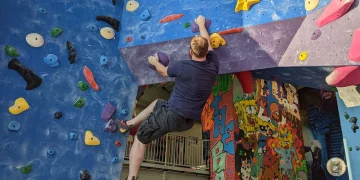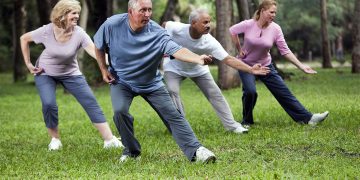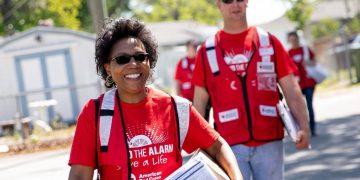Community health programs play a pivotal role in improving the well-being of individuals and communities. These initiatives—ranging from fitness challenges to mental health awareness campaigns—provide structured support, education, and resources to help people lead healthier lives. However, the power of these programs goes beyond just individual benefits; when implemented effectively, they foster social cohesion, provide a sense of purpose, and create long-lasting positive impacts on the overall quality of life for a community.
In this article, we’ll explore how understanding and engaging with successful community health programs can not only enhance your own life but also enable you to positively impact the lives of those around you. From case studies of successful programs to practical tips on how you can get involved, we’ll delve into the key factors that make these programs effective and how you can leverage them to foster a healthier, more vibrant community.
I. The Importance of Community Health Programs
Before diving into specific examples, it’s important to understand why community health programs are so crucial for improving health outcomes. In many places, individuals face barriers to accessing healthcare, whether due to financial constraints, lack of transportation, or insufficient health education. Community-based programs bridge these gaps by offering resources and support where they are most needed.
Community health programs can focus on a range of issues, including:
- Physical health (e.g., exercise and nutrition programs)
- Mental health (e.g., stress management and support groups)
- Chronic disease prevention (e.g., diabetes management workshops)
- Health education (e.g., awareness campaigns about healthy habits)
- Social well-being (e.g., fostering social connections and reducing isolation)
What sets these programs apart is their ability to bring together people from all walks of life, creating a shared sense of responsibility and collective action toward improving health outcomes. The positive ripple effects from these programs can improve both individual health and the health of entire communities.
II. Successful Community Health Program Case Studies
Let’s take a look at some successful community health programs to see how they have improved the lives of participants, and how these models can be applied to other communities.
1. The Walking School Bus: Promoting Physical Activity in Children
The Walking School Bus (WSB) is a community-based program designed to encourage physical activity in children while also ensuring they get to school safely. Children and adult volunteers form a “walking bus,” where the group walks to school together along a designated route. This program serves multiple purposes:
- Physical Activity: It helps children get exercise before school, promoting lifelong healthy habits.
- Community Engagement: Parents and volunteers are actively involved in ensuring the safety and well-being of the children.
- Environmental Benefits: The program reduces the reliance on cars, helping to decrease pollution and traffic around schools.
Impact on Lives: The WSB has had significant positive effects on both children’s health and the community’s social fabric. Children get exercise, improve their cardiovascular health, and develop social skills. Additionally, the program fosters a stronger sense of community as parents and volunteers come together to support local children.
How It Can Improve Your Life: By engaging in or starting a similar initiative in your community, you can improve your own health by walking regularly, while also helping to promote physical activity in children and foster a sense of unity and connection.
2. The Diabetes Prevention Program: Empowering Communities to Combat Chronic Disease
The Diabetes Prevention Program (DPP) is an evidence-based community health program that aims to prevent the onset of type 2 diabetes. This program targets at-risk individuals, particularly those who are overweight or have a family history of diabetes. Participants undergo a year-long program that includes:
- Lifestyle education: Topics include healthy eating, physical activity, and stress management.
- Support groups: Participants meet regularly with health coaches and peers to monitor progress and share experiences.
- Accountability: Participants track their weight, blood sugar levels, and activity levels.
Impact on Lives: Research shows that the DPP can reduce the risk of developing type 2 diabetes by more than 50%. Participants often lose weight, improve their nutrition, and engage in regular physical activity, which contributes to improved long-term health outcomes.
How It Can Improve Your Life: If you or someone you know is at risk for diabetes, joining a program like DPP can be life-changing. The structure, education, and support offered in these programs can help you make sustainable changes that improve overall health and prevent chronic diseases.
3. The Community Garden Project: Growing Health and Connection
Many communities have turned to community gardens as a way to improve access to fresh, healthy food, while simultaneously creating a space for social interaction and environmental stewardship. These gardens are typically located in urban areas, where access to fresh produce may be limited. Community gardens allow individuals to grow their own food, often with the help of local volunteers and experts.
Impact on Lives:
- Nutritional Benefits: Participants have access to fresh, organic vegetables and fruits that may otherwise be too expensive or hard to find.
- Social Connection: Gardens serve as gathering places, helping people connect with others in their community and build relationships.
- Mental Health: Gardening has been shown to reduce stress, improve mood, and foster a sense of accomplishment.
- Environmental Impact: Gardens contribute to sustainability efforts by reducing the need for food transportation and by fostering awareness of environmental issues.
How It Can Improve Your Life: Getting involved in a community garden can help you improve your nutrition and mental health, while also offering a chance to meet others and be part of a meaningful community initiative. You can also share the knowledge you gain with others, promoting healthier eating and a stronger sense of community.
III. The Role of Education and Awareness in Community Health
Beyond physical health initiatives, community health programs that focus on education and awareness have a huge impact. These programs teach individuals about healthy lifestyles, proper nutrition, stress management, and mental health. When communities are educated about health risks, prevention strategies, and resources available to them, they are better equipped to take control of their own health and make informed decisions.
1. Mental Health First Aid Training: Reducing Stigma and Increasing Support
Mental health is an essential part of overall health, but many people still feel uncomfortable or unprepared to talk about mental health issues. Mental Health First Aid (MHFA) is an educational program that teaches participants how to identify, understand, and respond to signs of mental health and substance use challenges. It also reduces stigma and encourages more people to seek help when needed.
Impact on Lives: People who take part in MHFA training become more comfortable talking about mental health, which helps to reduce stigma. They are better equipped to help others who are struggling, whether it’s a friend, family member, or co-worker. This creates a supportive, empathetic environment that encourages people to seek help and find the resources they need.
How It Can Improve Your Life: By participating in or organizing mental health training in your community, you can learn valuable skills for supporting others, while also becoming more aware of your own mental health. This fosters a more compassionate and understanding community environment.

IV. How You Can Get Involved and Make a Difference
Now that we’ve seen how successful community health programs can improve the well-being of individuals and communities, you may be wondering how you can participate or initiate similar programs in your own community. Here are a few ways to get involved:
1. Volunteer for Existing Programs
Many successful community health programs are always looking for volunteers. Whether it’s assisting with a local fitness class, helping to organize a health fair, or supporting mental health workshops, there are numerous opportunities to contribute your time and energy to meaningful causes.
2. Start Your Own Initiative
If you see a gap in your community’s health resources or if you’re passionate about a particular cause, consider starting your own program. This could range from organizing a walking group to creating an educational campaign about healthy eating. Starting small can lead to big changes.
3. Promote Health Education
Even if you’re not directly involved in running a program, you can still make a big impact by spreading awareness about available resources. Educate friends, family, and colleagues about health programs in your area. Encourage participation and offer support for those who may need it.
4. Advocate for Community Health Initiatives
Advocacy is key to ensuring that community health programs are sustained and supported. Whether it’s through local government, school districts, or nonprofit organizations, your voice can help advocate for policies and funding that support health and wellness programs.
V. Conclusion
Understanding successful community health programs can significantly improve your life and the lives of those around you. These programs empower individuals to take control of their health, create social bonds, and promote collective well-being. Whether through physical activity, mental health support, or education, the positive impacts are clear.
By learning from these examples, getting involved in existing programs, or even starting your own initiatives, you can make a real difference in your community. Not only will you improve your own health and well-being, but you’ll also contribute to the creation of a healthier, more connected society. So, take that first step—whether it’s joining a local walking group, supporting a mental health initiative, or starting a community garden—and watch how your actions ripple out to positively impact the people around you.

















































